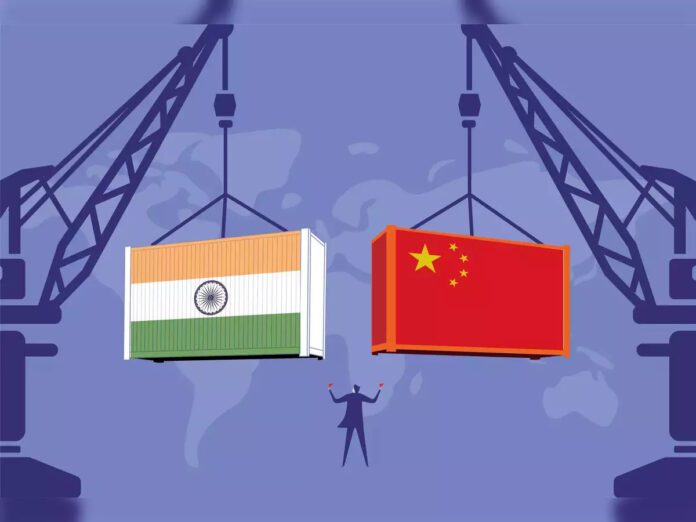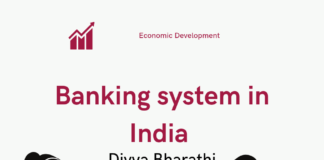In recent times, China has faced recurrent outbreaks of respiratory ailments due to close human-animal contact, prompting a critical re-evaluation of global supply chains by businesses. The Global Trade Research Initiative (GTRI) highlights the need for diversification, especially considering past outbreaks like Covid-19, H7N9 bird flu, H5N6 bird flu, and H10N3 bird flu. This article delves into the potential shift in global manufacturing dynamics, with a focus on India emerging as a viable alternative and the strategic steps needed to position itself on the world stage.
I. The Resilience Challenge: China’s Recurrent Health Crises
China has grappled with repeated outbreaks, notably the game-changing Covid-19 in 2019 and subsequent instances of bird flu. These crises have fueled concerns about the vulnerabilities of global supply chains heavily reliant on China for manufacturing. The repercussions of these outbreaks are steering businesses toward reconsidering their supply chain strategies, with a growing inclination toward reshoring or diversification to mitigate risks.
A. The Catalyst: Covid-19 and Global Supply Chain Disruptions
The Covid-19 pandemic, originating in China, unveiled the susceptibility of interconnected global supply chains. Disruptions in the supply of essential goods, particularly medicines, underscored the need for alternative manufacturing hubs. This crisis served as a wake-up call for businesses to reassess their dependence on a single manufacturing giant and explore diversified options.
B. Northern China’s Respiratory Illness Surge: A Lingering Concern
The report notes a surge in respiratory illnesses among children in northern China since mid-October 2023. Linked to the easing of Covid-19 restrictions and the onset of the cold season, this resurgence amplifies the health risks associated with close human-animal contact. Businesses are now more compelled than ever to seek alternatives and secure their supply chains against unforeseen disruptions.
II. India’s Strategic Advantage: A Hub for Global Manufacturing
A. Capitalizing on China’s Vulnerabilities: India’s Opportunity Beckons
Recognizing the growing unease around China’s repeated health challenges, businesses are actively exploring alternatives. India emerges as a promising candidate to absorb some of the global manufacturing burden. Leveraging its diverse strengths, India can position itself as a robust alternative hub, offering stability and resilience to global supply chains.
B. Make in India Initiatives: Shaping a Global Manufacturing Hub
Prime Minister Narendra Modi’s “Make in India – Make for the World” policy, announced at the World Economic Forum in 2022, reflects India’s ambition to position itself as a global manufacturing and export hub. The policy emphasizes self-reliance and actively seeks to draw foreign firms, signaling a paradigm shift in India’s manufacturing narrative.
III. Global Shifts: Companies Eyeing India as a Manufacturing Base
A. Boeing’s Test: A Boost for India’s Aviation Manufacturing
US aircraft manufacturer Boeing’s USD 34 billion deal with Air India signifies a pivotal moment for both businesses and India. As Western companies seek alternatives to China, Boeing’s move to begin production in India serves as a litmus test for India’s manufacturing capabilities and its appeal as a major production base.
B. Apple’s Diversification: A Step Towards Tech Manufacturing Hub
Apple’s efforts to diversify its production away from China align with the broader trend. Manufacturing older phone models in 2017 marked the beginning, and the local production of flagship iPhone 14 models in India signals a gradual shift. More than 70% of iPhones in India were locally manufactured in 2022, showcasing India’s potential in the electronics manufacturing sector.
IV. India’s Manufacturing Potential: Catalysts for Growth
India’s emergence as a global manufacturing hub is fueled by several factors that make it an attractive destination for businesses looking to diversify their supply chains.
A. Strategic Advantages: Key Contributors to Manufacturing Potential
- Sizable and Trainable Workforce: India boasts a large, trainable workforce, a critical asset for manufacturing operations.
- Digital Infrastructure: Efficient operations are facilitated by India’s robust digital infrastructure.
- Logistics Investments: Ongoing investments in logistics infrastructure contribute to seamless supply chain operations.
- Strategic Location: Proximity to different countries enhances India’s appeal for supply chain diversification.
- Access to Emerging Markets: A strategic location positions India as a gateway to emerging markets, amplifying its attractiveness.
- Cost Advantages: India offers cost advantages in low-cost and economical manufacturing, supported by a strong legal system and patent protection.
V. Challenges and Opportunities: Navigating the Path to Global Manufacturing Dominance
A. India’s Commitment and Challenges
India’s commitment to becoming a global manufacturing hub is evident, but challenges persist. Addressing these challenges and capitalizing on opportunities is crucial for India’s sustained growth and success in reshaping global manufacturing dynamics.
- Labour Force and Domestic Market: India’s unparalleled labour force and vast domestic market set it apart.
- ‘Make in India’ Initiatives: Active pursuit of the ‘plus-one’ strategy and easing business setup for foreign firms demonstrate India’s commitment.
- Aatmanirbhar Bharat Campaign: Launched in 2020, this campaign aligns with the goal of self-reliance and reducing dependence on external sources.
- Ease of Business: Simplifying regulatory frameworks and bureaucratic processes is vital for attracting and retaining foreign businesses.
**B. A
Paradigm Shift: From China-centric to Global Resilience**
The ongoing global shifts signal a paradigm shift from a China-centric manufacturing model to a more resilient and diversified approach. India, with its strategic initiatives and inherent strengths, is poised to play a pivotal role in this transformation.
VI. Conclusion: India’s Ascent to Manufacturing Prominence
As the world grapples with the aftermath of repeated health crises originating in China, India stands at the forefront of reshaping global manufacturing. The ‘Make in India’ initiatives, coupled with strategic decisions by global giants like Boeing and Apple, underscore India’s rising prominence. The path ahead demands a commitment to overcoming challenges, fostering a conducive business environment, and enhancing crisis preparedness. India’s journey from being a participant in global supply chains to a key orchestrator marks a pivotal moment in the evolution of manufacturing dynamics. The vision of an Aatmanirbhar Bharat, a self-reliant India, is gradually transforming into a reality.









